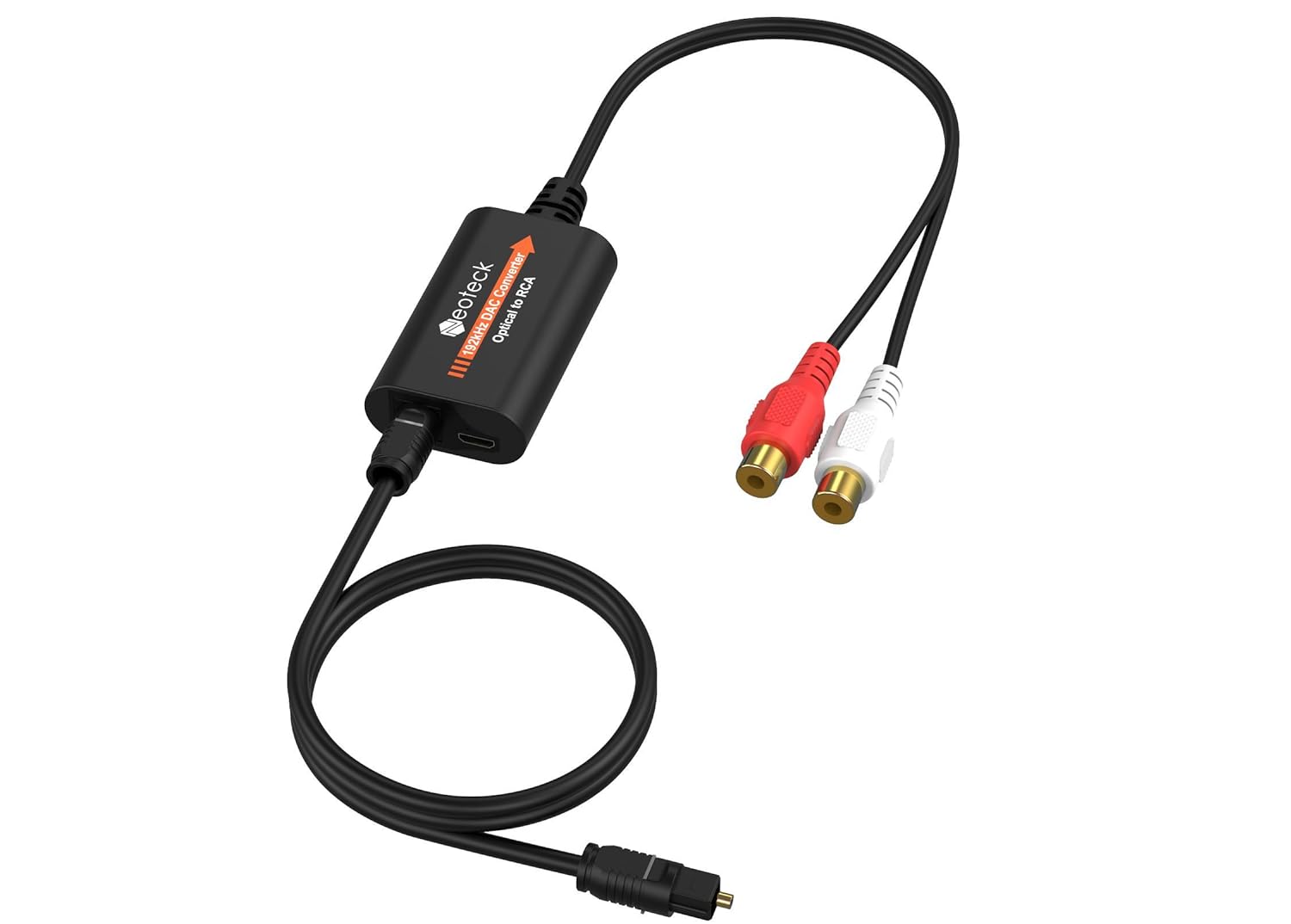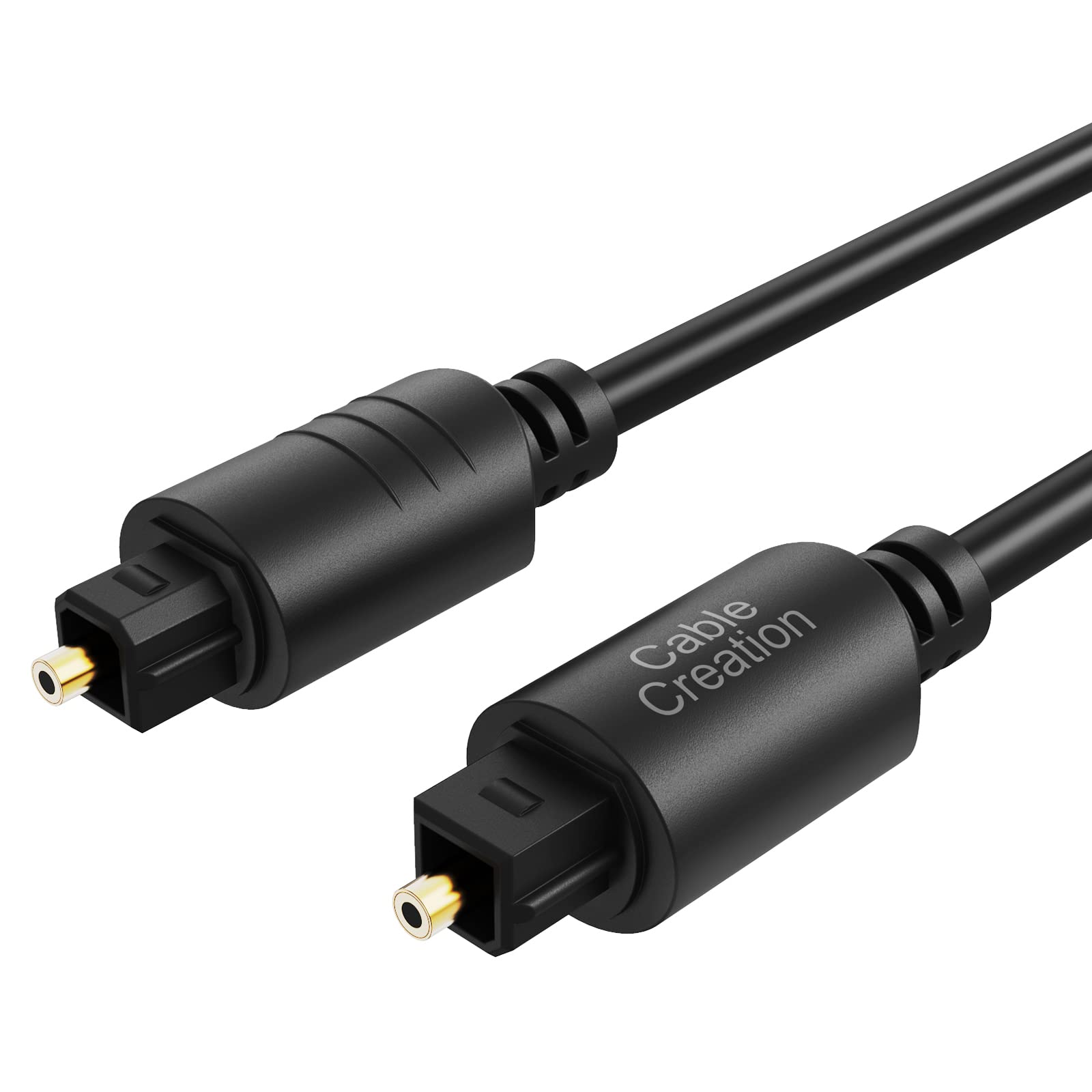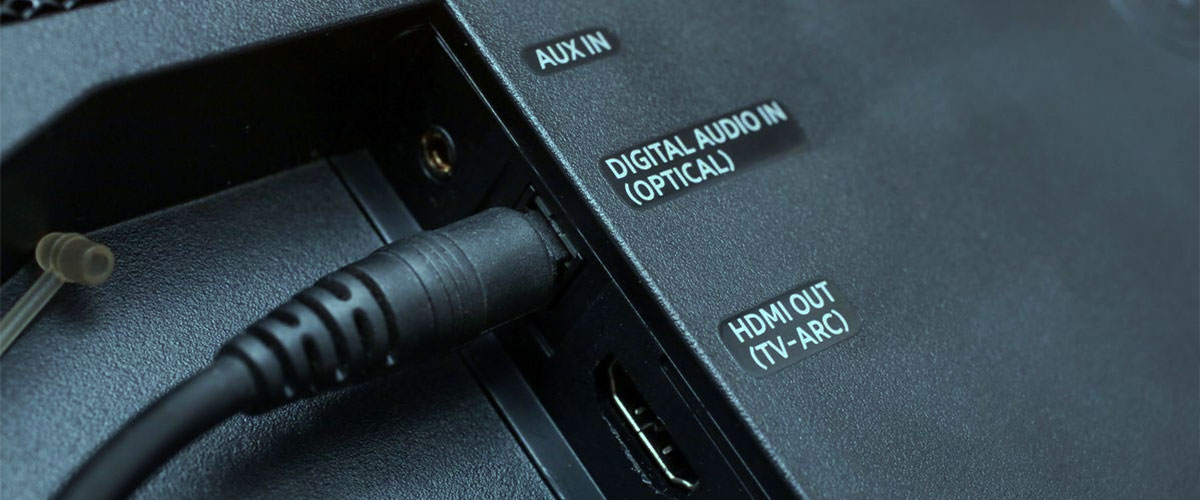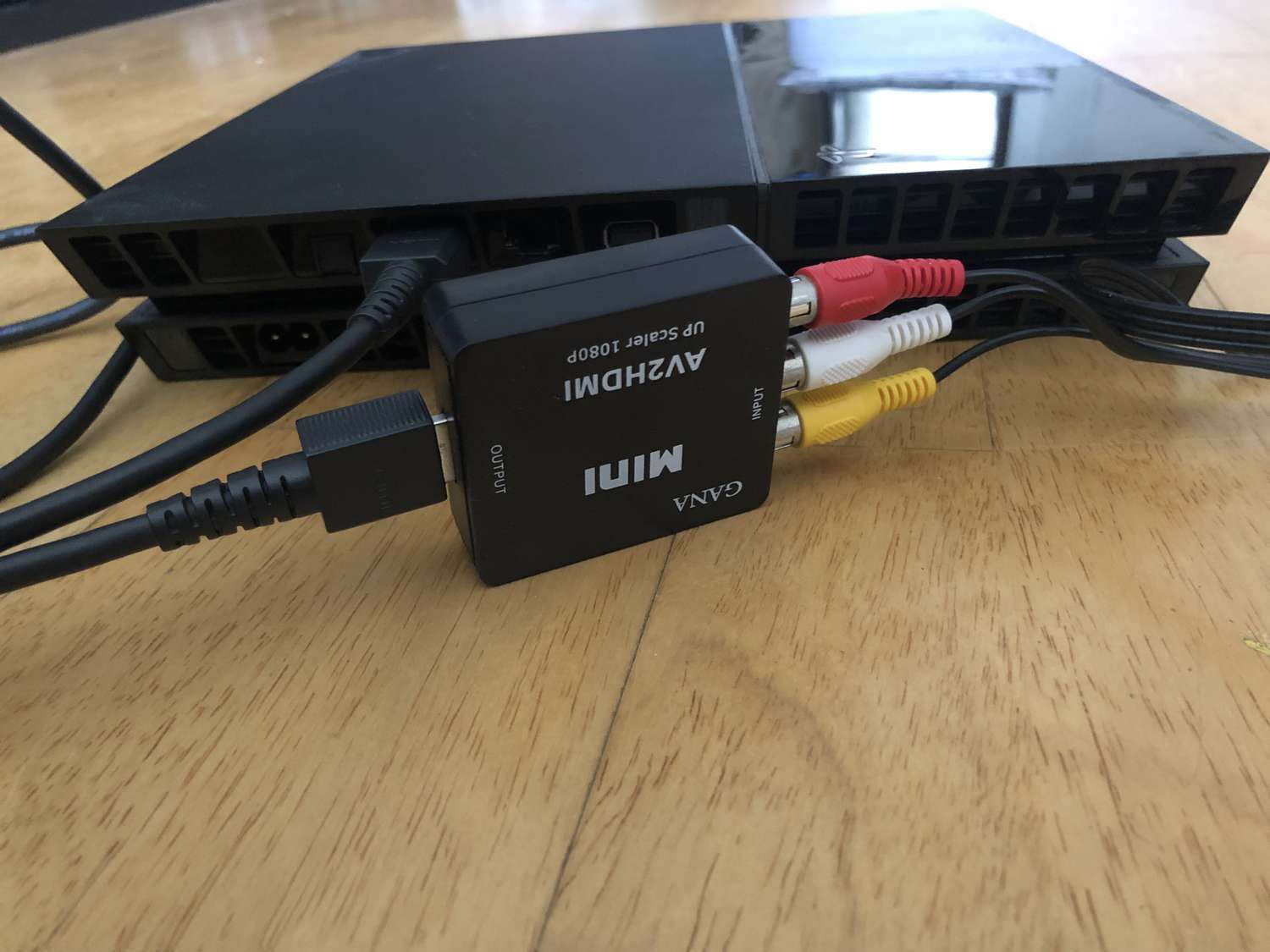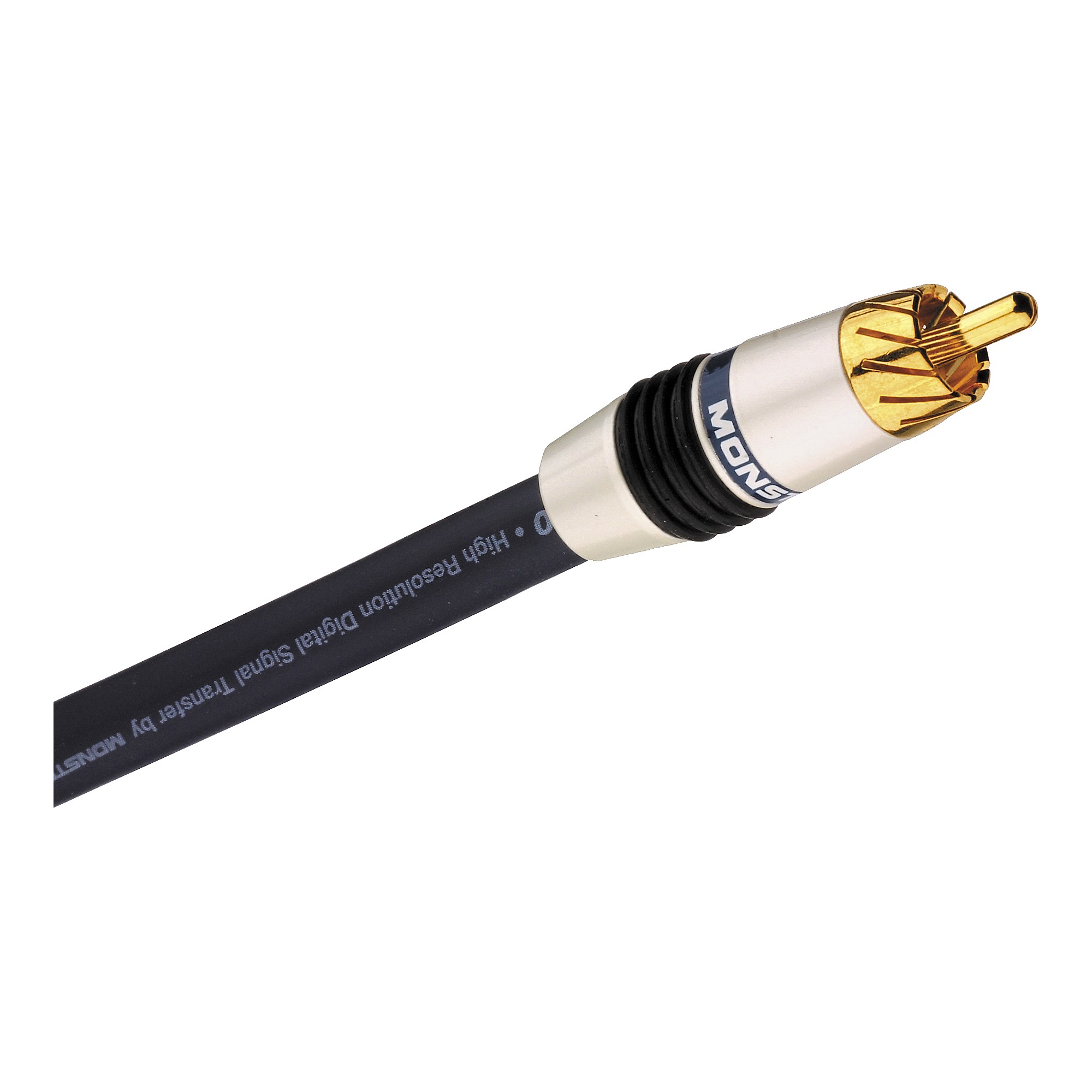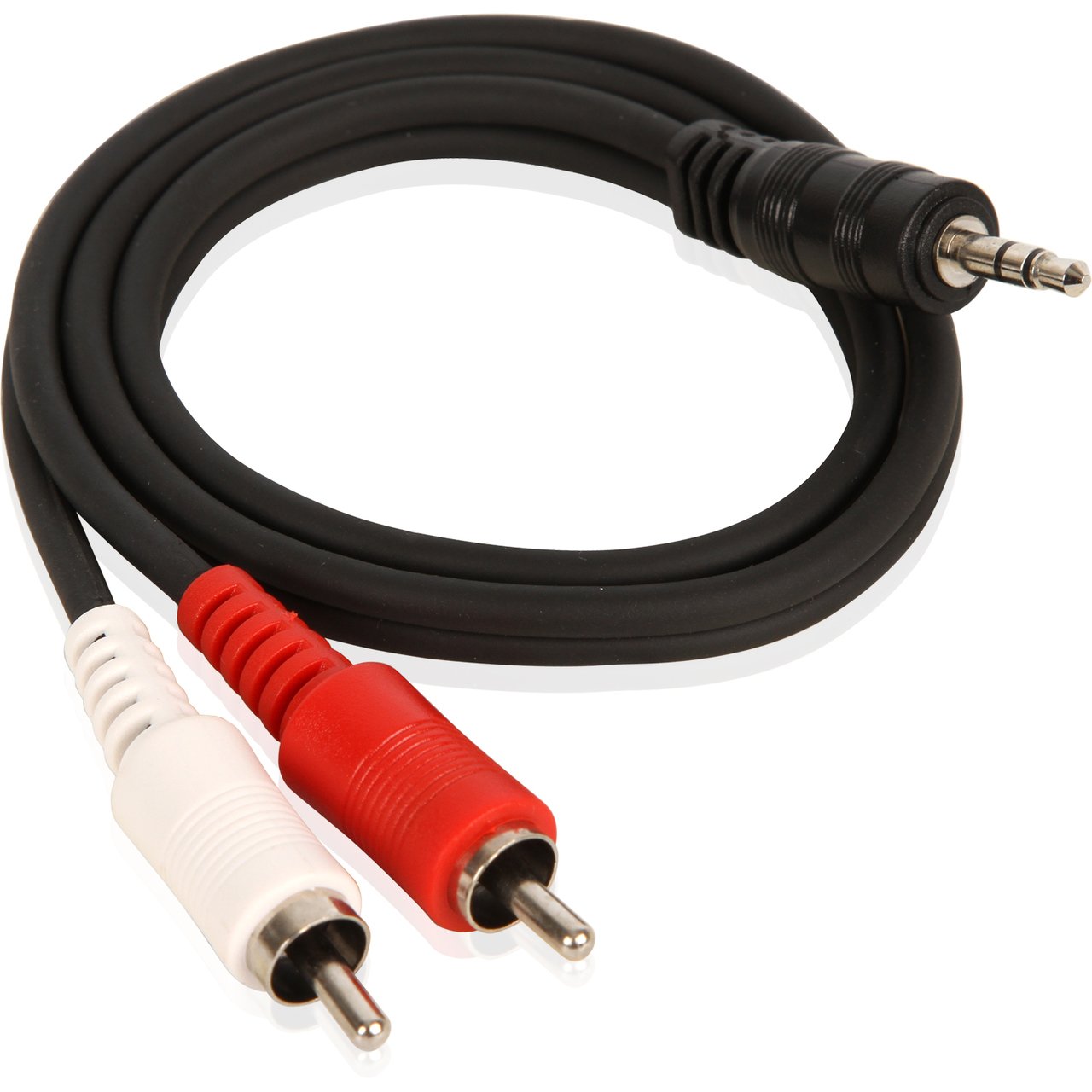Home>Production & Technology>Audio Cable>How To Buy Optical Audio Cable
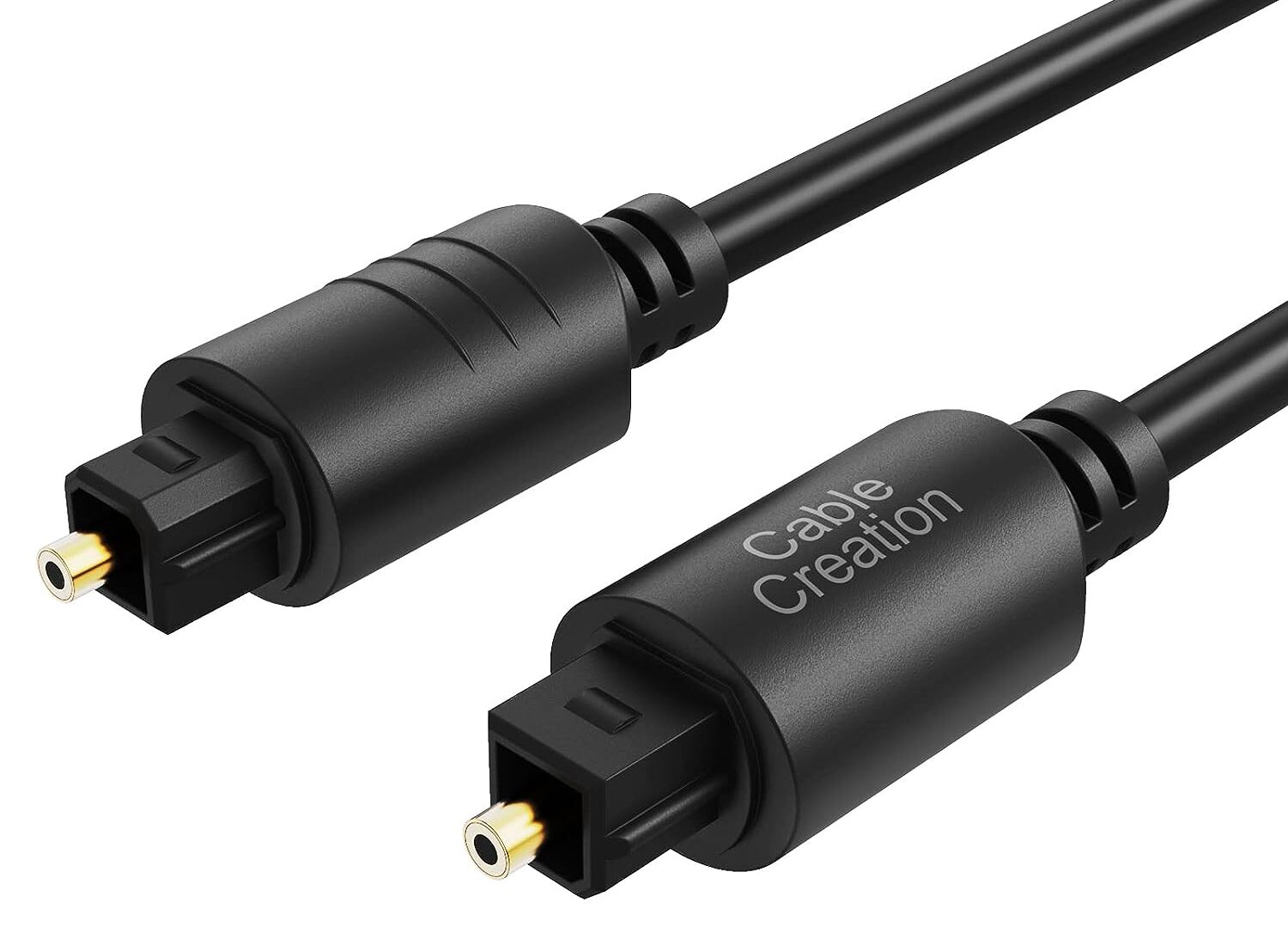

Audio Cable
How To Buy Optical Audio Cable
Modified: January 22, 2024
Looking to buy an audio cable? Learn how to purchase the perfect optical audio cable for your audio setup. Find tips and recommendations for buying the best quality audio cables.
(Many of the links in this article redirect to a specific reviewed product. Your purchase of these products through affiliate links helps to generate commission for AudioLover.com, at no extra cost. Learn more)
Table of Contents
- Introduction
- What is an Optical Audio Cable?
- Benefits of Using Optical Audio Cables
- Factors to Consider Before Buying an Optical Audio Cable
- Types of Optical Audio Cables
- Selecting the Right Length for Your Needs
- Understanding Optical Audio Cable Connectors
- Shopping for Optical Audio Cables
- Comparing Different Brands and Models
- Tips for a Successful Purchase
- Conclusion
Introduction
Welcome to the world of audio excellence! If you’re searching for an exceptional audio experience, then you’ve come to the right place. In this article, we will explore the fascinating world of optical audio cables and guide you on how to choose the best one for your needs. Whether you are an audiophile, a music enthusiast, or a movie lover, a high-quality audio cable can make a significant difference in your listening pleasure.
Optical audio cables, also known as TOSLINK or SPDIF cables, are a popular choice when it comes to transferring digital audio signals between devices. Unlike traditional analog cables, optical audio cables use light to transmit the audio signal, resulting in a cleaner and more accurate sound reproduction.
With the rise of home theater systems, soundbars, gaming consoles, and other audio devices, the demand for optical audio cables has surged. These cables have become an essential component for connecting audio sources, such as televisions, Blu-ray players, gaming consoles, and sound systems, to deliver immersive sound quality.
In this article, we will cover everything you need to know about optical audio cables, from their benefits and different types available, to factors to consider before purchasing, and tips for a successful purchase. By the end, you will have a comprehensive understanding of optical audio cables and be equipped with the knowledge to make an informed decision when buying one.
So, let’s dive into the world of high-fidelity audio and discover how to enhance your listening experience with the right optical audio cable!
What is an Optical Audio Cable?
An optical audio cable, also known as a TOSLINK or SPDIF cable, is a type of cable specifically designed to transmit digital audio signals. Unlike traditional analog cables that use electrical currents to transfer audio signals, optical audio cables utilize fiber optics and light to transmit the audio data.
The cable consists of a core made of optical fibers, which are capable of carrying the audio signal in the form of light. The core is surrounded by a protective jacket that ensures the cables are durable and shielded from interference.
At each end of the optical audio cable, there is a connector in the form of a small square or rectangular plug. These connectors are designed to fit into the corresponding ports on audio devices such as TVs, soundbars, Blu-ray players, game consoles, and home theater receivers.
Optical audio cables are commonly used to connect audio sources that output digital audio, such as Dolby Digital or DTS surround sound, to compatible audio equipment. These cables support multi-channel audio formats and are capable of transmitting high-quality audio with minimal signal loss.
One of the key advantages of optical audio cables is their ability to transmit audio in a completely digital format. This means that the audio signal remains in its original digital form from the source device to the receiving device, without any degradation or conversion to analog. As a result, optical cables deliver pristine sound quality and are immune to electromagnetic interference and noise.
It is important to note that optical audio cables can only transmit audio signals and not video signals. For connecting video devices, such as TVs and Blu-ray players, HDMI cables are typically used.
In summary, an optical audio cable is a specialized cable that uses fiber optic technology to transmit digital audio signals. Its ability to deliver high-quality, noise-free audio makes it an excellent choice for connecting audio devices and enhancing your audio experience.
Benefits of Using Optical Audio Cables
Optical audio cables offer numerous benefits that make them a popular choice for audio enthusiasts. Let’s explore some of the key advantages of using optical audio cables:
- High-Quality Audio: Optical audio cables transmit audio signals in a digital format, resulting in high-fidelity sound reproduction. This means that you can enjoy crystal-clear audio with minimal distortion or signal loss. Whether you’re listening to music, watching movies, or playing games, optical audio cables deliver immersive and detailed sound.
- No Interference: Unlike analog cables that are susceptible to electromagnetic interference, optical audio cables are immune to interference. The fiber optic technology used in these cables prevents external factors like electrical noise, radio waves, and magnetic fields from affecting the audio signal, ensuring a clean and distortion-free listening experience.
- Durable and Long-Lasting: Optical audio cables are built to last. The fiber optic cables are resistant to wear and tear, and the protective jacket provides additional durability. They are less prone to damage compared to analog cables, such as RCA or 3.5mm cables, which can experience wear and signal degradation over time.
- Wide Compatibility: Optical audio cables have become a standard in audio equipment, making them highly versatile and compatible with a wide range of devices. You can connect optical audio cables to TVs, soundbars, home theater receivers, gaming consoles, Blu-ray players, and more. This compatibility makes it convenient to set up and connect various audio devices in your home entertainment system.
- Support for Surround Sound: If you enjoy immersive audio experiences, optical audio cables are an excellent choice. They support surround sound formats like Dolby Digital and DTS, allowing you to experience movie theater-like sound quality in the comfort of your own home. With multi-channel audio, you can enjoy the full range of audio effects, including directional sound and ambient noise.
Overall, optical audio cables offer superior audio quality, durability, and compatibility. Whether you’re setting up a home theater system, connecting your TV to a soundbar, or enjoying gaming with surround sound, optical audio cables ensure that you experience the full potential of your audio devices with exceptional sound reproduction.
Factors to Consider Before Buying an Optical Audio Cable
When it comes to purchasing an optical audio cable, it’s important to consider various factors to ensure you choose the right one for your needs. Here are some key factors to consider before making your purchase:
- Cable Length: Determine the length of the optical audio cable you need. Measure the distance between the audio source and the receiving device to ensure you purchase a cable that is long enough to reach without any strain or unnecessary cable clutter. It’s always better to choose a slightly longer cable rather than one that is too short.
- Cable Quality: Pay attention to the quality of the optical audio cable. Higher-quality cables often have better construction and shielding, which helps minimize signal loss and interference. Look for cables made from quality materials, such as optical fiber with a protective jacket, to ensure durability and optimal performance.
- Connectors: Check the type of connectors on the cable. Most optical audio cables use standard TOSLINK connectors, which are square or rectangular in shape. Ensure that the cable’s connectors are compatible with the audio devices you plan to connect. It’s essential to have a secure and snug fit to maintain a reliable audio connection.
- Budget: Consider your budget when selecting an optical audio cable. Prices can vary depending on the brand, cable quality, and length. Set a budget range and try to find a cable that offers a balance between quality and affordability. Remember that investing in a higher-quality cable can have long-term benefits with better audio performance and durability.
- Brand and Reputation: Research the brand and read customer reviews before purchasing. Opt for reputable brands that have established a positive reputation for manufacturing reliable and high-quality cables. Customer reviews can provide valuable insights into the performance and durability of specific cable models.
- Future-Proofing: Consider your future audio needs. If you plan on upgrading your audio equipment or expanding your audio setup, it may be wise to invest in a higher-quality optical audio cable with future-proof capabilities. This ensures that the cable can handle advanced audio formats and technologies that may emerge in the future.
By considering these factors, you can make an informed decision and choose an optical audio cable that meets your specific requirements in terms of length, quality, compatibility, budget, and future-proofing capabilities. This will help optimize your audio setup and ensure a seamless and immersive audio experience.
Types of Optical Audio Cables
When it comes to optical audio cables, there are a few different types to be aware of. While they all serve the same purpose of transmitting digital audio signals, understanding the different types can help you make an informed choice. Here are the main types of optical audio cables:
- Standard TOSLINK Cable: This is the most common type of optical audio cable. It features a square-shaped TOSLINK connector on both ends, which is widely compatible with audio devices such as TVs, soundbars, gaming consoles, and Blu-ray players. Standard TOSLINK cables are available in various lengths to accommodate different setups.
- Mini TOSLINK Cable: Also known as 3.5mm optical cables, mini TOSLINK cables are designed for devices with a mini optical audio output. They feature a smaller, 3.5mm TOSLINK connector on one end, which is often used with devices like laptops, smartphones, tablets, and portable audio players. The other end typically has a standard TOSLINK connector for easy connection to audio receivers or soundbars.
- Adapters and Converters: In some cases, you may come across optical audio cables with different types of connectors on each end. This is where adapters and converters come into play. These accessories allow you to convert between different connector types, such as TOSLINK to mini TOSLINK or TOSLINK to RCA. Adapters and converters can be useful if you need to connect devices with different optical audio connectors.
- Flexible Fiber Optic Cable: As the name suggests, flexible fiber optic cables are designed to be more pliable and bendable compared to standard optical audio cables. This flexibility can be beneficial when you need to navigate tight spaces or have a cable routing that requires more flexibility. Flexible fiber optic cables maintain the same high-quality audio transmission and are available in various lengths and connector types.
It’s important to choose the type of optical audio cable that matches your specific audio setup and device requirements. Consider factors like the available connectors on your audio devices, the need for flexibility, and any potential adaptability required for your setup.
Regardless of the type, always ensure that the cable is of high quality with reliable construction and shielding. This will help minimize signal loss and interference, resulting in optimal audio performance and longevity.
Consult the user manuals of your audio devices or speak with a knowledgeable salesperson to determine the appropriate type of optical audio cable for your specific needs. By selecting the right type of cable, you can enjoy seamless audio connectivity and exceptional sound quality for your home entertainment system.
Selecting the Right Length for Your Needs
Choosing the right length of optical audio cable is crucial to ensure a proper and hassle-free audio setup. Here are some tips to help you select the appropriate cable length for your needs:
- Measure the Distance: Start by measuring the distance between your audio source and the receiving device. This could be the distance between your TV and soundbar, Blu-ray player and AV receiver, or gaming console and audio system. Use a measuring tape or ruler to determine the exact length required.
- Consider Cable Management: Take into account the cable management and aesthetics of your setup. Think about how you want to route the cable, whether you will be hiding it behind furniture or walls, or if it needs to be neatly organized. Add some extra length to account for any bends, twists, or cable slack required to achieve a clean and organized appearance.
- Avoid Stretching or Straining: It’s crucial to choose a cable length that allows for a comfortable and stress-free connection. Avoid excessively stretching or straining the cable to reach the audio devices. This can lead to potential damage to the cable or the connectors, resulting in poor audio quality or a faulty connection.
- Account for Future Changes: Consider any potential changes or upgrades to your audio setup in the future. If you plan on rearranging your room or adding new devices, having some extra cable length can provide flexibility for future changes without the need for purchasing additional cables.
Optical audio cables are available in various lengths, typically ranging from 1 meter (3.3 feet) to 15 meters (49.2 feet) or longer. It’s advisable to choose a cable that is slightly longer than the measured distance to provide some leeway for flexibility and cable management.
Keep in mind that excessively long cables can result in signal loss, so avoid unnecessarily long cables if they are not needed. However, if you require a longer cable due to specific setup requirements, ensure that it is of high quality to maintain optimal audio performance.
Lastly, you can always use cable management solutions like cable clips, sleeves, or conduits to keep the cable neatly organized and hidden from view, regardless of the length chosen.
By considering the distance between your audio devices, cable management needs, future changes, and avoiding any cable strain or stretching, you can select the perfect length of optical audio cable that ensures a reliable and seamless audio connection for your setup.
Understanding Optical Audio Cable Connectors
Optical audio cables come with connectors at each end to ensure a secure and reliable connection between audio devices. Understanding the different types of connectors can help you choose the right cable for your audio setup. Here are the commonly used optical audio cable connectors:
- TOSLINK Connector: This is the standard connector used in most optical audio cables. It has a square or rectangular shape and uses a pin and port design for a secure connection. TOSLINK connectors are widely compatible with audio devices such as TVs, soundbars, home theater receivers, gaming consoles, and Blu-ray players.
- Mini TOSLINK Connector: Also known as 3.5mm optical connectors, mini TOSLINK connectors are smaller in size and often used with portable audio devices like laptops, smartphones, tablets, and portable audio players. They have a 3.5mm diameter and can plug into devices that have a mini optical audio output.
- TOSLINK to Minijack Adapter: In some cases, you may need to connect a TOSLINK cable to a device with a 3.5mm mini optical audio output. In such instances, a TOSLINK to minijack adapter can be used to convert the TOSLINK connector into a mini TOSLINK connector, allowing compatibility with devices that have the smaller-sized port.
- TOSLINK to RCA Converter: If you need to connect an optical audio cable to a device with RCA connectors instead of TOSLINK connectors, a TOSLINK to RCA converter can be used. This converter enables you to convert the optical audio signal into an analog signal that can be connected to devices like AV receivers or older audio equipment.
When choosing an optical audio cable, it’s essential to ensure that the connectors on the cable match the connectors on your audio devices. Having a secure and snug fit is crucial for a reliable audio connection without any signal loss or interruption.
It’s important to note that some devices may have different versions of TOSLINK connectors, such as mini TOSLINK or TOSLINK 3.5mm. Make sure to check the specific connector type required by your devices to ensure compatibility.
If you have devices with different connector types, adapters and converters can be used to bridge the gap and ensure compatibility. These accessories allow you to convert between different connector types, making it possible to connect TOSLINK cables to devices with mini TOSLINK or RCA connectors.
By understanding the different types of optical audio cable connectors and ensuring compatibility with your audio devices, you can seamlessly connect your devices and enjoy high-quality audio without any compatibility issues.
Shopping for Optical Audio Cables
When it comes to shopping for optical audio cables, there are a few key factors to consider to ensure you make the right choice for your audio setup. Here are some tips to help you navigate the process:
- Research Brands and Reviews: Start by researching reputable brands that are known for manufacturing high-quality optical audio cables. Look for customer reviews and ratings to gain insights into the performance and durability of specific models.
- Consider Cable Quality: Pay attention to the quality of the cable construction and materials. Opt for cables made from high-quality optical fibers and a protective jacket to ensure durability and optimal audio transmission.
- Check for Compatibility: Ensure that the cable you choose has the appropriate connectors that match your audio devices. Whether you need standard TOSLINK connectors or mini TOSLINK connectors, make sure the cable is compatible with your specific devices.
- Length Requirements: Determine the length of the cable you need by measuring the distance between your audio source and the receiving device. Choose a cable that is slightly longer than the measured distance to account for flexibility and cable management.
- Compare Prices: Compare prices from different retailers to find the best deal for your chosen cable. Keep in mind that quality and durability are important, so consider investing in a higher-quality cable even if it means spending a bit more.
- Consider Warranty: Look for cables that come with a warranty. A warranty provides peace of mind and ensures that you can get a replacement or repair if any issues arise with the cable.
It’s also worth checking if the cable you’re interested in purchasing comes with any additional features or technologies. For example, some cables may offer additional shielding or advanced signal processing to further improve audio quality and reduce signal loss.
When shopping online, read the product descriptions and specifications carefully to ensure you’re getting the right cable that meets your requirements. Take advantage of customer reviews and feedback to get a better idea of the cable’s performance and reliability.
Lastly, if you have any specific questions or concerns, don’t hesitate to reach out to the retailer or the manufacturer’s customer support. They can provide you with additional information and guidance to help you make an informed decision.
By following these tips, you can confidently shop for an optical audio cable that suits your needs and enhances your audio experience.
Comparing Different Brands and Models
When it comes to optical audio cables, there are various brands and models to choose from, each offering different features and performance. Comparing different brands and models can help you find the best optical audio cable for your specific needs. Here are some factors to consider when comparing:
- Brand Reputation: Start by researching the reputation of the brands you are considering. Look for established and reputable brands that are known for producing reliable and high-quality audio cables. Brands with a good reputation often prioritize product quality and customer satisfaction.
- Build Quality: Consider the build quality of the cables. Look for cables made with durable materials, such as high-quality optical fibers and a robust protective jacket. Opt for cables with proper shielding to minimize signal loss and interference, ensuring optimal audio performance.
- Signal Integrity: Pay attention to the signal integrity of the cables. Look for cables that offer low loss and distortion, ensuring accurate transmission of the audio signal from the source to the receiving device. This will result in cleaner and more precise audio reproduction.
- Connectivity and Compatibility: Check if the cable connectors are compatible with your audio devices. Ensure that the connectors match the ports on your devices, whether they are standard TOSLINK or mini TOSLINK connectors. Compatibility is key to ensuring a secure and reliable audio connection.
- Length Options: Consider the available cable length options. Choose a cable that suits your specific setup requirements. It’s advisable to select a cable that is slightly longer than the measured distance to provide flexibility and allow for efficient cable management.
- Customer Reviews: Read customer reviews and testimonials to gain insights into the real-world performance of the cables. Check for positive feedback regarding audio quality, durability, and customer satisfaction. Pay attention to any recurring issues or complaints that may indicate potential drawbacks.
- Additional Features: Some optical audio cables may offer additional features or technologies that enhance audio performance. Look for cables with advanced shielding, gold-plated connectors, or other innovative features that can further improve audio quality and signal integrity.
Take the time to assess your audio setup needs and prioritize the factors that are essential for your specific requirements. Consider your budget as well and find a balance between performance and affordability.
Ultimately, the best optical audio cable will depend on your personal preferences and the specific demands of your audio setup. By comparing different brands and models based on the factors mentioned above, you can make an informed decision and choose the optical audio cable that best suits your needs.
Tips for a Successful Purchase
When purchasing an optical audio cable, there are a few tips you can follow to ensure a successful and satisfactory buying experience. Consider these tips to make the right choice:
- Research and Educate Yourself: Take the time to research and educate yourself about optical audio cables. Understand the different types, connectors, and features available. This knowledge will help you make an informed decision and choose a cable that suits your audio setup.
- Set a Budget: Determine your budget range before you begin shopping. It’s essential to strike a balance between quality and affordability. Remember that investing in a higher-quality cable can lead to improved audio performance and durability in the long run.
- Read Customer Reviews: Read customer reviews and testimonials to gain insights into the performance and reliability of specific optical audio cables. Look for patterns in the feedback to get a better understanding of potential pros and cons.
- Compare Prices: Compare prices from different retailers to find the best deal for your chosen cable. Consider any additional costs, such as shipping fees or warranties, when comparing prices. Keep in mind that quality and durability should be prioritized over price alone.
- Check Compatibility: Ensure that the connectors on the cable are compatible with your audio devices. Double-check this information to avoid any compatibility issues. If needed, consider using adapters or converters to bridge any connector mismatches.
- Consider Cable Length: Measure the distance between your audio source and the receiving device to determine the appropriate cable length. Choose a cable that is slightly longer than needed to allow for flexibility and cable management.
- Check Warranty: Look for cables that come with a warranty. A warranty provides assurance and protection in case of any defects or issues with the cable. Be sure to understand the warranty terms and conditions before making a purchase.
- Seek Expert Advice: If you’re unsure about which optical audio cable to choose or have specific questions, don’t hesitate to seek expert advice. Reach out to audio professionals, retailers, or customer support for guidance.
- Consider Future Needs: Think about any potential changes or upgrades to your audio setup in the future. Choosing a cable with future-proofing capabilities or a longer length can ensure that it remains compatible and functional as your needs evolve.
By following these tips, you can make a successful purchase and select the right optical audio cable that meets your requirements in terms of performance, compatibility, durability, and budget. Enjoy your enhanced audio experience with a high-quality cable that delivers clean and immersive sound.
Conclusion
Optical audio cables are a fantastic choice for transmitting digital audio signals with high-fidelity and precision. By utilizing fiber optic technology, these cables deliver pristine sound quality and are immune to interference. Whether you’re setting up a home theater system, connecting a soundbar to your TV, or enjoying gaming with surround sound, optical audio cables can greatly enhance your audio experience.
In this article, we explored the world of optical audio cables and learned about their benefits, types, connectors, and factors to consider when making a purchase. We discussed the importance of choosing the right cable length, understanding different connector types, and comparing brands and models for optimal performance.
Remember to research reputable brands, read customer reviews, and consider factors such as cable quality, signal integrity, and compatibility with your audio devices. Setting a budget, checking warranties, and considering future needs are all vital in making a successful purchase.
Whether you’re a dedicated audiophile, a music enthusiast, or simply someone who appreciates high-quality audio, investing in a reliable and high-quality optical audio cable is crucial. With the right cable, you can unlock the full potential of your audio devices and enjoy an immersive and captivating sound experience.
So, take your time, explore the options, and choose the optical audio cable that suits your needs. Enhance your audio setup, immerse yourself in incredible sound, and elevate your audio enjoyment to new heights!


